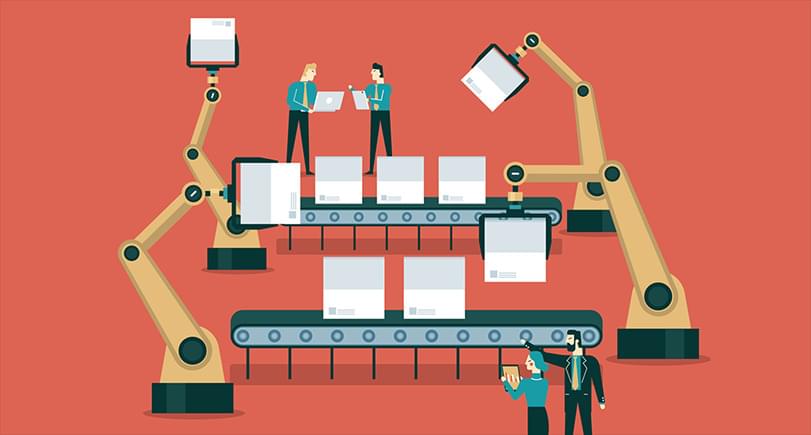Sep 21, 2020 by Mark Dingley
In case it wasn’t already on the radar for Australian manufacturers, the role of automation has become even more critical in the fallout of COVID-19.

Manufacturers using automation and robotics have moved further and faster than their counterparts during the pandemic. Robotics and automation have made continued production not only possible, but also safer and more efficient. Automation makes it easier for manufacturers to keep their workers socially distanced on the factory floor – after all, machines cannot catch the virus.
Some manufacturers have used machines to pivot more easily and start manufacturing different lines, including products that are needed to combat the virus, like masks and hand sanitiser. But you don’t need a pandemic for automation to provide benefits; it helps companies ramp up production volumes to meet increased demand without compromising on quality.
Now, as we face a post COVID-19 world, uptake of automation technology is set to be a gamechanger for manufacturers, driving productivity and efficiency while making processes more flexible and adaptable. Those that didn’t grab the opportunity pre-COVID will have more motivation to automate at least some processes and become more competitive.
There’s even funding to help - the $50 million Manufacturing Modernisation Fund provides co-funded grants to upgrade manufacturing processes and adopt new technologies in small and medium manufacturing businesses.

Data collection and analysis is the key to remaining competitive for manufacturers. Improving business processes, finding operational efficiencies, improving quality assurance, and transforming business models all rely on data collection and analytics.
Line performance software, like Matthews iDSnet, allows manufacturers to collect data and display it on live dashboards. Managers can then use this information to pin-point stoppages and bottlenecks and ultimately improve the Overall Equipment Effectiveness (OEE).
Automation doesn’t mean replacing all your workers with machines. The best approach comes from enhancing processes and freeing up people to leverage their experience and insight.
For example, collaborative robots (“cobots”) and automated equipment can take on repetitive tasks and enable staff to focus on monitoring equipment and ensuring efficiency. This decreases the chance of human error and frees employees from performing repetitive tasks. They can instead focus more on value-adding activities, which can lead to improved throughput and profitability.
One example is a label printer applicator (LPA). The biggest benefit of an LPA is that it provides the opportunity to drive efficiencies in the line. It can apply labels precisely to give your product a professional finish – even at high line speeds that humans wouldn’t be able to achieve.
Automated equipment can bolster quality management. Inspection systems and machine vision inspection systems can conduct automatic quality inspection with a consistency and reliability that humans can never achieve.
For example, inspection machines can check closures for the correct caps by colour, validate the presence and position of labels, sort products based on marking, and more. This delivers increased precision and efficiency, even while the speed of production lines increases.
A full automation implementation may seem overwhelming – especially in uncertain times. Instead, consider a “small automation” approach. Focus on quickly implementing flexible and adaptable technologies that fill the gaps and provide a fast ROI. This approach is not only easier to roll out and control, it is more flexible than big automation, which lets you pivot quickly if needed.
Talk to our experts to see if automation is right for you and which solution makes the best sense for your needs – now and in the future.